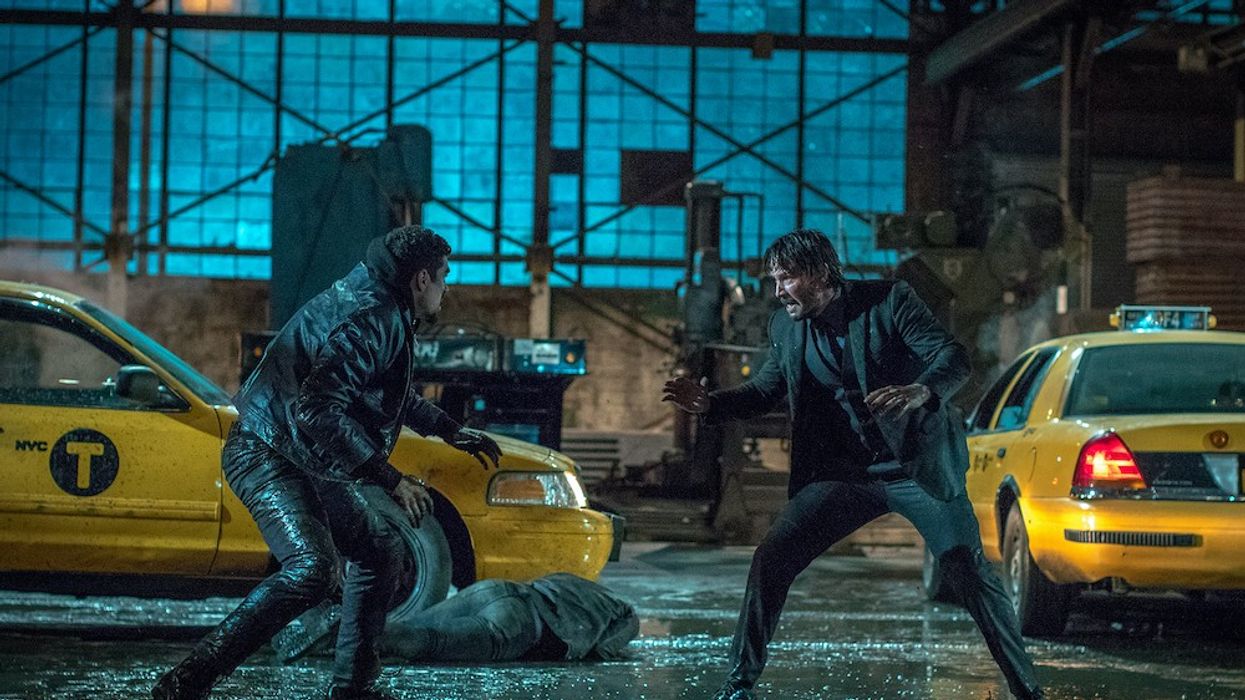3 Things Every Great Fight Scene Has That Bad Ones Don't
Successful fight scenes aren't just about action—they're about so much more.

I'm a human being with a vascular system and adrenal glands and a brain and stuff, so naturally, I like fight scenes.
Show me any martial arts rumble and I'll be set—Jackie Chan, Bruce Lee, gimme it—however, any epic battle that incorporates the key ingredients that make these types of scenes fun and necessary to watch is alright by me.
But what are those key ingredients? What elements are at play beneath all the punches, kicks, and sword swipes?
Henry Boseley of The Closer Look digs deep into what makes a fight scene great in his video essay below, so give it a watch and continue on for more.
Okay, so what do great fight scenes consist of? Clearly, they're creative, they build tension, they have good pacing, they might even add cool technical tricks that show us something that we've never seen before. (Hello... the bullet-time sequences in The Matrix.)
But at the end of the day, these are the most essential pieces that need to be baked into every one of these action sequences for them to rise to the level of greatness they're (hopefully) trying to achieve.
Your Fight Should Serve the Story
Boseley mentions this element at the very end of his video essay, but I think it's the cornerstone of a great fight scene... so it must be analyzed first.
What purpose does a fight scene serve? What is it trying to achieve? More simply, why does it exist in the first place?
The answer should be "to serve the story."
I know, there are some pretty awesome fight scenes that are thrown into an action flick for sheer spectacle—and that's fine—but it's not great.
Great fight scenes push the story forward in the same way other types of great scenes do. They open with an established status quo and end with that status quo being disrupted. They add a new piece of information or answer an important question in the plot or character arc of a key character.
So, it might seem like a good idea to add a fight scene in your film because you want to excite your audience, but guess what—most audiences actually don't want action for action's sake, they want action that takes them deeper into the story, that immerses them in the drama, and gets them more engaged with the characters' journey.
The fight scene between Obi-Wan Kenobi and Darth Vader in Star Wars: A New Hope is a great example of this. As Boseley points out, there's little else going on in this scene—no complicated choreography or power exchanges—other than the very important plot point of Obi-Wan, Luke Skywalker's mentor, dying. Could this fight use a little more variety and a dynamic power struggle, yes, of course, but it has the most important element, which makes it timeless and epic.

Variety, Variety, Variety
Okay, let's talk about that fight in A New Hope for a second.
Star Wars is great. The fight scenes, at least early on, are not.
For those of you that are still here despite that bit of heresy, here's why.
There's very little going on physically in those early lightsaber battles; as Boseley describes it, it's just two people smacking swords together. It's a blow-by-blow fight that gets repetitive and tedious after a while.
Give your audience something new to see—a kick instead of a punch, a pistol-whip instead of a gunshot, a ladder to the heels instead of a chop to the neck.
Our brains are great at noticing patterns and using that information to plan and predict future events; that's why sometimes when you're driving, you end up at your destination without remembering the last several minutes of your journey.
This happens with action scenes, too. If you create a fight pattern—headshot, headshot, duck; headshot, headshot, duck, headshot, headshot, duck—that last the full length of the fight, your audience's brains are going to go on autopilot and will have already predicted the rest of the scene before your hero victoriously steps over the dozens of baddies they just leveled.
Don't let your audience get ahead of your fight scene. Add some variety.

The Struggle for Power
Another essential element in a great fight scene is the struggle for power.
How interesting is it to watch the hero mow down his enemies with an endless barrage of bullets without suffering a single blow? It's not interesting. It's boring. It's not easy to be invested in a fight between two obviously unfairly matched opponents, because it gets dull watching the protagonist continually winning. That's why we like difficult matchups and close games in sports, gang!
That's why the best fight scenes are ones in which you're not quite sure if the hero is going to come out of it victorious. Will Frodo, Sam, and the gang overcome Sauron and his disgusting orc army? Peter Jackson regularly makes us question if they will. How?
Filmmakers do this by playing with the power positions of the opposing sides, continuously switching who has the upper hand to create the all-important sense of tension that makes movies worth watching.
Remember, you're making a movie. Drama is its lifeblood. Make your hero struggle to win.

So, if you're getting ready to write some fight scenes into your screenplay, keep these 3 things in mind. You'll not only give your audience something cool and exciting to watch but also something that brings them deeper into the world you've created for them.











